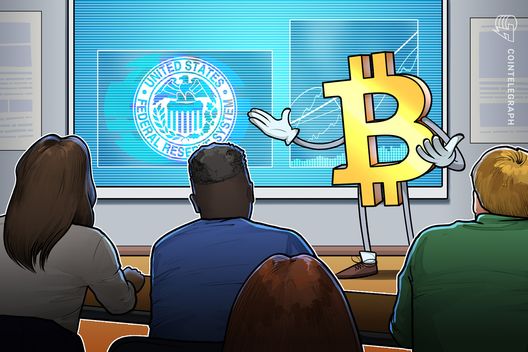Several analysts suggest that Bitcoin could potentially rally to $120,000 if the Federal Reserve eases rates in response to the economic impact of tariffs and potential war. The Federal Reserve maintained interest rates between 4.25%–4.50% on June 18, but a surprise cut could help drive Bitcoin to a fresh peak, according to CMC Markets market analyst Carlo Pruscino. The analyst noted that the “upside target” that traders have in mind is $112,000 for Bitcoin if the Federal Reserve cuts interest rates “sooner than expected.”
Factors Influencing a Potential Rate Cut:
- Trade Tensions: Escalating trade tensions, particularly involving the U.S., could create a "tariff trap," leading to market volatility. Uncertainty in trade policies may prompt the Federal Reserve to delay monetary easing, negatively impacting Bitcoin's performance.
- Geopolitical Risks: A potential war, such as a conflict between the U.S. and Iran, or broader instability in the Middle East, could disrupt the global energy supply and force the Federal Reserve to cut rates as a protective measure.
- Economic Instability: A sudden breakdown in financial stability or a credit shock could also trigger emergency interest rate cuts.
Historical Context and Market Reaction:
- Past Rate Cuts: The last emergency rate cut occurred in March 2020, when the Federal Reserve slashed rates by 100 basis points in response to the global spread of COVID-19. During the early panic of this event, investor sentiment plummeted.
- Tariff Announcements: Bitcoin's price previously dipped below $100,000 following tariff announcements but rebounded after a U.S. court blocked unilateral tariff impositions.
- Analyst Observations: Bitcoin analyst Lance Roberts has pointed out patterns similar to the 2019 U.S. trade war impact. If trade tensions ease, Bitcoin's price could potentially hit new all-time highs near $120,000, especially if the U.S. Treasury begins buying BTC and other assets for a crypto strategic reserve.
Impact of Rate Cuts on Bitcoin:
- Increased Liquidity: Lower interest rates typically lead to increased liquidity in financial markets. This provides more capital for riskier investments, including cryptocurrencies.
- Higher Risk Appetite: With lower borrowing rates and yields from government bonds, investors may seek higher returns in riskier assets like Bitcoin.
- Weakening Dollar: Rate cuts may devalue the domestic currency, attracting foreign investment and potentially increasing the price of dollar-denominated assets like Bitcoin.
- Inflation Hedge: In a low-interest-rate environment, Bitcoin's appeal as a hedge against inflation grows, as investors seek alternative stores of value.
- Positive Investor Sentiment: The Fed's rate-cutting cycles generally have a positive impact on the cryptocurrency market, often leading to price increases, rising capital inflows, and improved investor sentiment.
Alternative Analyst Projections:
It's important to note that while the $120,000 target is mentioned, other analysts have different predictions for Bitcoin's price in 2025. CoinCodex's prediction table estimates Bitcoin could trade between $105,670 and $179,681 in 2025, leading to an average price of $127,169. Standard Chartered, on the other hand, forecasts Bitcoin reaching $200,000 by the end of 2025, and even higher in subsequent years. These varying projections highlight the inherent uncertainty in cryptocurrency markets.
Disclaimer:
This information is for informational purposes only and should not be considered financial advice.

